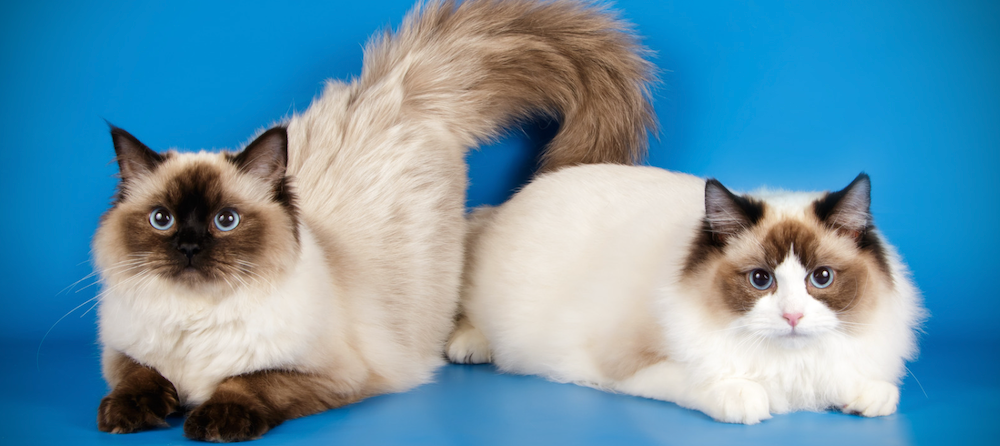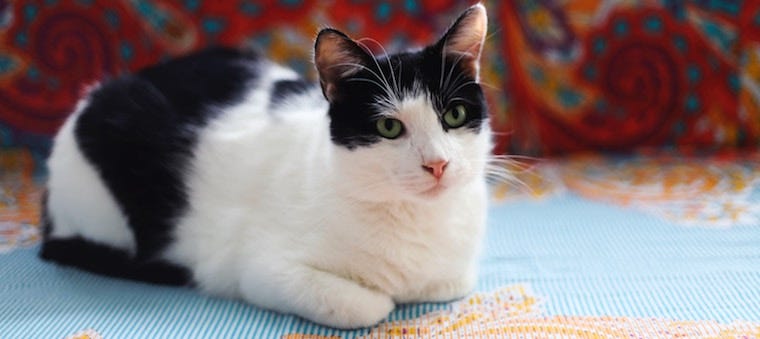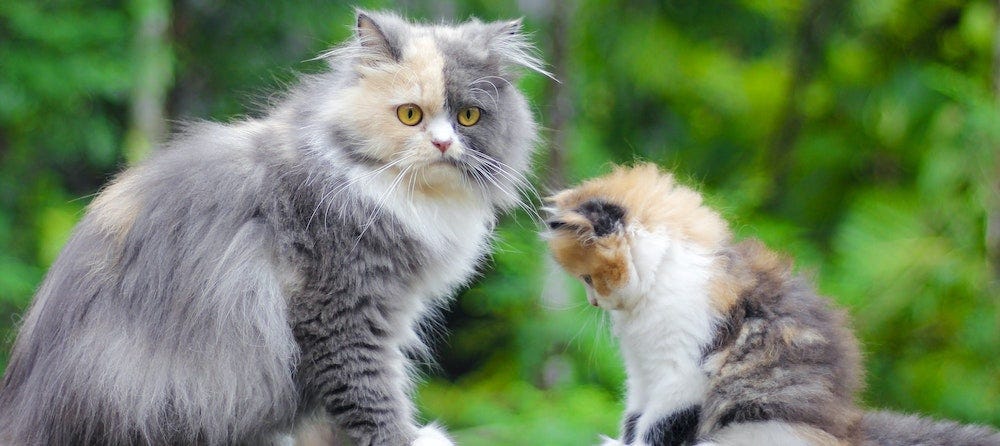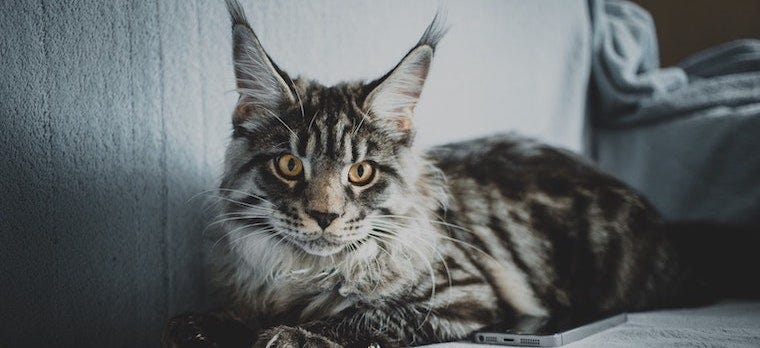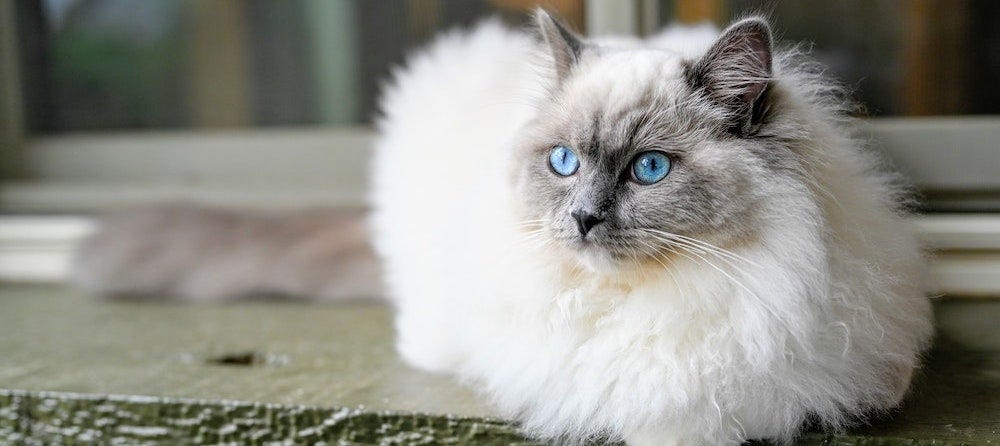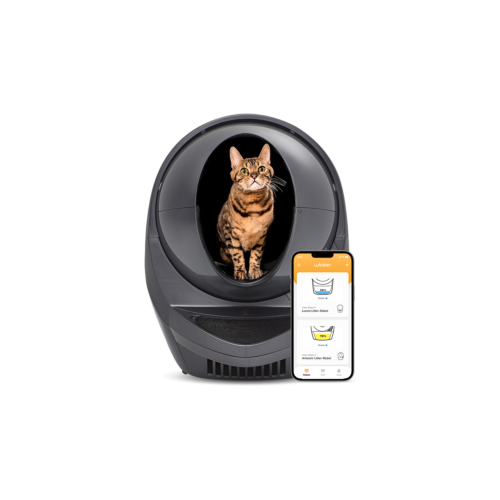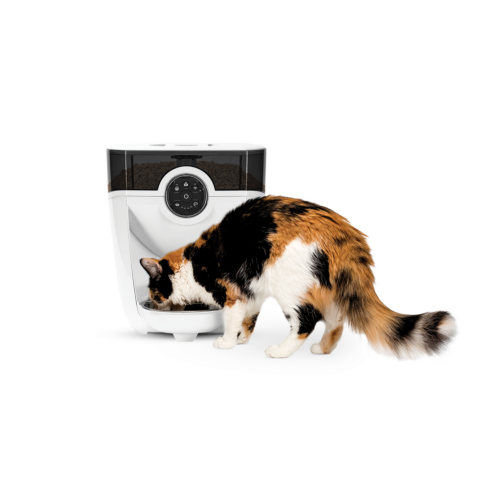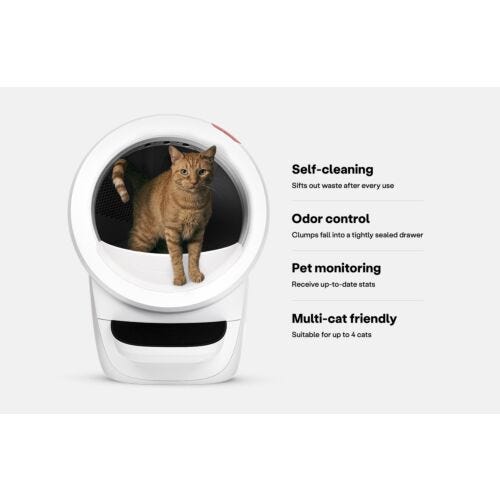When feline fanatics discuss the Ragdoll cat, you’re most likely to hear about this breed’s extreme affection towards their humans along with their gorgeous, silky colorpoint coat. Often overlooked is their size—in fact, the docile temperament and oh-so adorable fluff of this popular cat almost seems to contradict their impressive stature.
While the fluffy mane of the Ragdoll cat makes them appear a bit bigger than they are, they are nevertheless one of the largest cat breeds in existence.
It’s no surprise that the size of the Ragdoll cat takes a backseat to their other characteristics. That’s because today’s Ragdoll came about through selective breeding for gentle personality traits and the beautiful white coat of their original parent cat. Size didn’t play such an important role in this breed’s creation.
So just how big are Ragdoll cats compared to other domestic breeds? We’ve got all the answers for you here, so you know what you’re getting yourself into.
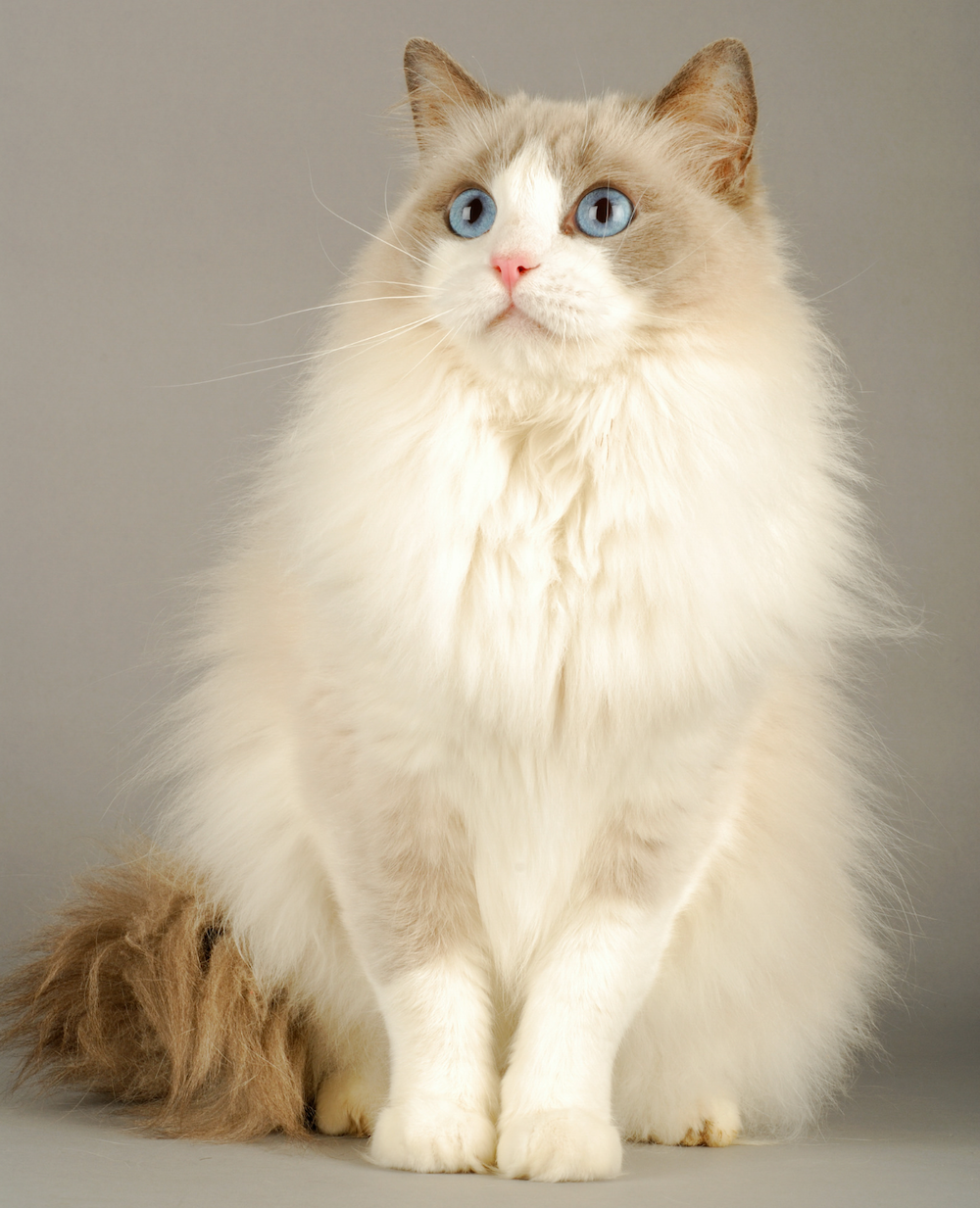
Ragdoll cat size

Known as “puppycats,” Ragdolls are a newer breed of cat that was refined in the 1960s after descending from a partially feral feline. It began when a Persian cat breeder named Ann Baker came across a beautiful, long-haired white cat in Riverside, California. She named this cat Josephine, and Josephine bore a litter of kittens that would go on to create the first official Ragdoll cats.
Along with silky colorpoint coats, Ragdolls became fast favorites in the cat world for their gentle, placid personalities. Their large size is almost beside the point, as the characteristics of this breed did not naturally arise in order to brave harsh conditions or hunt down prey for survival. Of course, like any feline, the Ragdoll breed has the instincts of an ambush predator. They’re just lucky enough to live out a life of luxury indoors!
Ragdolls also mature slowly, taking up to 4 years to reach their full size.
Average weight
For such a “floppy” and docile cat, Ragdolls are surprisingly heavy-boned. Unlike many cat breeds, female Ragdolls can grow to be just as big as males. Both males and females typically weigh between 10 and 20 pounds.
10-15 pounds may not strike you as large. However, most cats you’ve come across weighing 15 pounds or more are (unfortunately) more likely to be obese than to be a large cat breed like the Ragdoll. Obesity is prevalent in cats. But when you see a Ragdoll cat pushing 20 pounds, you'll realize you’re simply looking at a big, big feline.
Average height
The Ragdoll stands around 9-11 inches tall. This breed is an interesting case, in that what they lack in height, they make up for in weight and length.
Average length
The average Ragdoll cat measures an impressive 17-21 inches long. Factor in their plumed tail, and some of these gentle giants can reach up to 40 inches in length. Now that’s verging on Maine Coon (AKA, world record-breaking) territory! Their silky fur only accents their substantial body length.

Domestic breed comparisons
Domestic house cats will most likely be smaller than a Ragdoll cat. The smallest Ragdoll cat will be around the same size as an average medium-sized domestic cat.
Average weight
The average weight of other domestic breeds can range from 6-12 pounds, while a Ragdoll typically weighs 10-20 pounds.
Average height
Most domestic cat breeds stand around 10 inches tall, which is right in line with the Ragdoll’s average of 9-11 inches tall.
Average length
Let’s reiterate: Ragdoll cats can be very, very long. Their length becomes obvious when compared to other domestic cats. A typical domestic cat breed will be between 15-20 inches long. On the other hand, Ragdoll cats can be more than double that at up to 40 inches long.

Getting to know a Ragdoll cat
The large size of the Ragdoll cat may seem intimidating, but these cats are anything but. In fact, you couldn’t ask for a more loving kitty. Before you decide to adopt a Ragdoll purely based on physical attributes, it’s best to take the time to learn about their background, personality, and grooming requirements.
History
We know that the Ragdoll breed descended from one beautiful, free-roaming cat in California. So how did the breed go on to become one of the most popular in the world?
Josephine, the mother of all Ragdoll cats, produced a litter with three kittens that would help to make the features of the breed—a long, cream-colored coat, dark points, and blue eyes—permanent. The male kitten, named Daddy Warbucks, is considered the first Ragdoll and was mated with a second-generation kitten to produce two other offspring.
The National Cat Fanciers' Association (NCFA) accepted these kittens as the first registered Ragdoll cats in 1966. Ann Baker, the original breeder, trademarked the Ragdoll name in 1971 and created the International Ragdoll Cat Association (IRCA) to set strict guidelines for breeding practices.
Other breeders eventually formed the Ragdoll Fanciers Club International (RFCI) to allow for less strict guidelines so the breed could be accepted into additional cat associations, and helped to introduce the breed to Britain.
Today’s Ragdoll cat can have 5 variations for coat patterns: colorpoint, mitted, bicolor, lynx point, and tortie point. Many are known to have striking blue eyes, but that is not always the case.
Personality
The Ragdoll cat is perhaps most beloved from their sweet, affectionate nature. Despite their size, these cats are so happy to be picked up and held that they’ll go limp in the arms of the person doing so. If you’ve ever wondered what it feels like to carry around a 20-pound fluffy, floppy ragdoll (hence the name), this cat is more than happy to show you.
Ragdolls are moderately active, and tend to enjoy snuggle time more than playtime. That doesn’t mean they aren’t happy to chase around a laser or wand toy when the moment is right. If their humans are on the receiving end of the activity, they’re much more apt to join in the fun.
In addition to the affection they share with their pet parents, these cats do well with kids and other pets in the household. While generally considered calm, this breed is very willing to play with respectful parties. And yes, their patience for being picked up and snuggled is seemingly endless. While these cats are quiet and won’t beg for love, they will subtly sneak in cuddles whenever they can.
Grooming and care
Surprisingly, the long, silky coat of the Ragdoll doesn’t require a tremendous amount of upkeep. This is partially due to their sparse undercoat, which leads to less matting and tangling than most other long-haired breeds. To keep their magnificent mane in tip-top shape, brush them weekly (or every few days during the shedding season of spring and summer).
While this breed is moderately active, you’ll want to make sure you’re feeding them healthy food portions. It’s easy to do so with an automatic pet feeder. And because their long fur can get in the way of bathroom activities, you may want to invest in a spacious self-cleaning litter box that leaves them a clean place to go every time!
The large size of the Ragdoll cat is just one fascinating feature of this special breed. These cats are so driven by love that they could weigh three times as much as they do and still try to be held on a daily basis. If you’re looking for an extremely affectionate and cuddly companion that just so happens to have breathtaking looks, the Ragdoll cat is for you.
